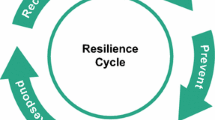Abstract
In Germany demand for Emergency Medical Services (EMS) physicians is outstripping supply. Telematic Rescue Assistance Systems (TRAS) offer the opportunity to use EMS physicians more efficiently by reducing the on-scene time. By transmitting audio, vital signs and video data telematically, they bring the expertise of a remote elder EMS physician, a hospital or otherwise specialized institution to the emergency site. However, with increasing complexity of the systems the technical risks become harder to manage. A more formal approach to reduce these risks is needed to ensure patient safety. In this paper some exemplary properties that are more or less inherent in all TRAS are presented. Based on these features and existing work, a methodology to reduce technical risks in developing TRAS is introduced.
Access this chapter
Tax calculation will be finalised at checkout
Purchases are for personal use only
Preview
Unable to display preview. Download preview PDF.
Similar content being viewed by others
References
U. Biegert. Ganzheitliche modellbasierte Sicherheitsanalyse von Prozessautomatisierungssystemen. PhD thesis, Stuttgart University, Stuttgart, Germany, 2003. IAS.
International Electrotechnical Commission. IEC 60300-3-1: Dependability management- Part 3-1: Application guide - Analysis techniques for dependability - Guide onmethodology. Technical report, 2003.
International Electrotechnical Commission. IEC 60812:Analysis techniques for systemreliability - Procedure for failure mode and effects analysis (FMEA). Technicalreport, 2006.
International Electrotechnical Commission. IEC 61025: Fault tree analysis (FTA).Technical report, 2006.
Bundesamt für Informationssicherheit. BSI-Standard 100-1, Version 1.0. Technicalreport, 2005.
International Organization for Standardization. ISO 27799: Health informatics - Informationsecurity management in health using ISO/IEC 27002, January 2008.
C. Gibson, J.A. de Lemos, and E.M. Antman. Time is muscle in primary PCI: thestrength of the evidence grows. Eur Heart J, pages 1001–1002, June 2004.
A. Gries, M. Helm, and E. Martin. The future of preclinical emergency medicine inGermany. Der Anaesthesist, 52:718, 2003.
A. Heide. Ursachenanalyse und Bewertung der Verantwortung bei Funktionsstörungen von softwaregesteuerten Komponenten im Maschinenbau. PhD thesis, ZLW/IMA,RWTH Aachen University, Aachen, Germany, 2004.
W. Martin. Arbeitsmarkt für Ärztinnen und Ärzte: Der Ärztemangel nimmt weiter zu. Deutsches Ärzteblatt, 105:853–854, 2008.
M. Protogerakis, A. Gramatke, and K. Henning. A System Architecture for a TelematicSupport System in Emergency Medical Services. In 3rd International Conference on Bioinformatics and Biomedical Engineering, Beijing, 2009.
R. Schmiede, H. Behrendt, and E. Betzler. Bedarfsplanung im Rettungsdienst: Standorte - Fahrzeuge - Personal - Kosten. Springer, Berlin, 2004.
K.H. Scholz and et al. Optimizing systems of care for patients with acute myocardialinfarction. STEMI networks, telemetry ECG, and standardized quality improvementwith systematic data feedback. Herz, 33:102–109, March 2008.
M. Skorning and et al. E-health in emergency medicine - the research project Med–on–@ix. Der Anaesthesist, pages 285–292, March 2009.
Author information
Authors and Affiliations
Corresponding author
Editor information
Editors and Affiliations
Rights and permissions
Copyright information
© 2011 Springer-Verlag Berlin Heidelberg
About this paper
Cite this paper
Müller, M., Protogerakis, M., Henning, K. (2011). A Methodology to Reduce Technical Risk in the Development of Telematic Rescue Assistance Systems. In: Jeschke, S., Isenhardt, I., Henning, K. (eds) Automation, Communication and Cybernetics in Science and Engineering 2009/2010. Springer, Berlin, Heidelberg. https://doi.org/10.1007/978-3-642-16208-4_10
Download citation
DOI: https://doi.org/10.1007/978-3-642-16208-4_10
Published:
Publisher Name: Springer, Berlin, Heidelberg
Print ISBN: 978-3-642-16207-7
Online ISBN: 978-3-642-16208-4
eBook Packages: Mathematics and StatisticsMathematics and Statistics (R0)




